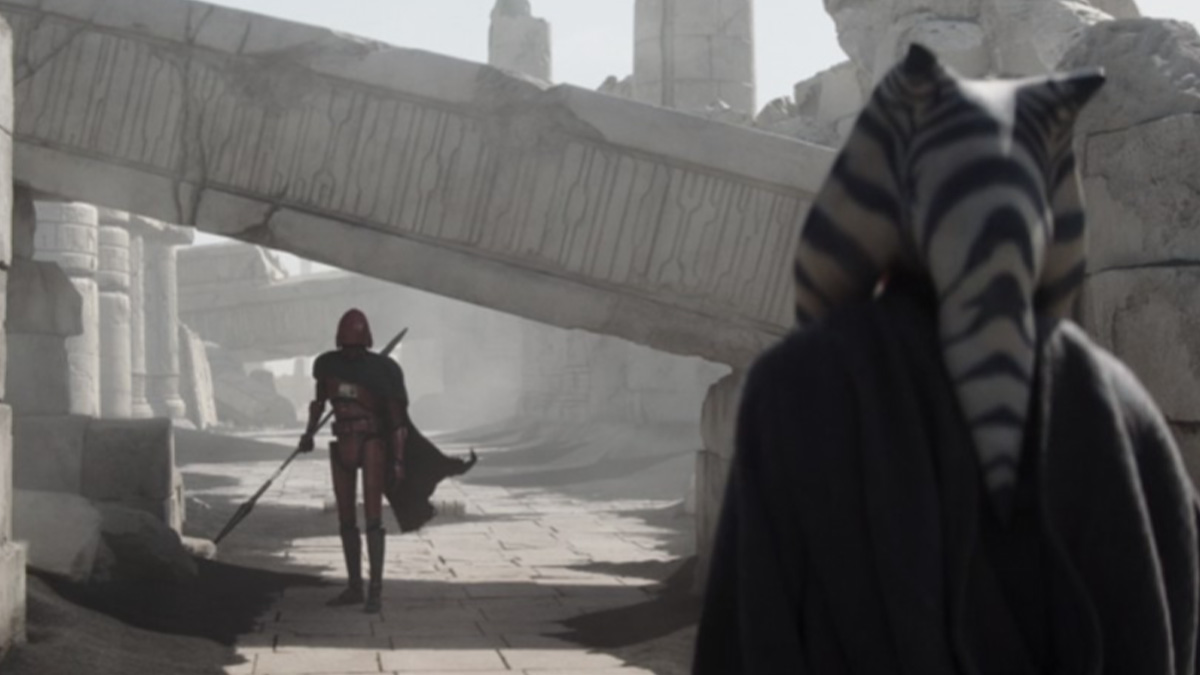It’s no secret that Star Wars fans are less than happy with most of Disney Plus’ latest offerings. Fans look on in frustration as Dave Filoni and Jon Favreau work to fill in ample plot holes left by the sequel trilogy and bring the franchise back to its roots. Filoni’s push to MCU-ify the Star Wars universe by merging every Disney Plus offering into one end-all-film seems more appealing if it fits the nostalgia of the first 3 films.
But some fans see the return to George Lucas’ inspiration as a step in the wrong direction. DibsNext recently posted a perfect satirical article about Disney’s overuse of George Lucas’ love for legendary director Akira Kurosawa, and it got me wondering: at what point does the merit of an homage start to bring down the quality?
George Lucas and his love for Akira Kurosawa
There’s no denying that Filoni is pushing hard to return to the franchise’s roots (isn’t that what every despot over on Twitter X actively requests?) and while it might not be innovation at its finest, there is merit to mimicking what you love, especially if it gives us some incredible visual style. Some of the most iconic shots from the original trilogy were born from Lucas’ emulation of legendary Japanese director Kurosawa.
Back in 1965, there wasn’t a lot of diversity in what was available to watch (thanks, Hays Code) and most media available was American-made. Kurosawa’s style was taken from American Westerns and silent movies, the same media that Lucas was studying while in film school. He liked the feeling of being thrown into an unknown environment, but one that made sense without cumbersome explanations. Lucas has said that it’s hard to see the true genius unless it’s interspersed with other less impressive directors. That visual style involves dramatic shots of action and the world, and more importantly, it doesn’t rely on exposition to get concepts across. Lucas has said that these captivating shots help establish tone and believes that many modern filmmakers don’t utilize those visual cues to their full advantage.
It should be no surprise that the California native had no concept of Japanese culture and no background in the language as a college student. Despite this, the human stories at the heart of Kurosawa’s films were easy to understand. While there were plenty of aspects to the stories that Lucas had no background in, it was unnecessary. Even if the culture was complex and oblique and the environment unknown, with the right elements, the story still made perfect sense. Knowing that Lucas never intended to keep the franchise going after the first film, the enigma makes perfect sense. The explanation for every aspect is something that Star Wars needs to unlearn from Marvel (no one cares about Sabin’s Loth-cat, Disney).
Dave Filoni has certainly gotten the memo about visual cues, if Ahsoka is any indication. Regardless of where you stand on the pacing, plot, or characters, there’s no denying the visual style of the series. It’s got everything from iconic vistas and dramatic upshots to dynamic gang poses and heroic stances. Filoni has certainly mastered the visual style of Kurosawa, but in a lot of ways he’s still working towards the human story.
While we love seeing the lore of Star Wars deepen, I keep coming back to one idea: maybe Star Wars audiences as a whole don’t care about the nitty-gritty and are only here for the overall. It’s the oblique that makes fantasy so intriguing. Fans may have complained about not knowing how the Force worked, but now that we have our answer in the form of midichlorians, it seems that many would take vague mysticism.

